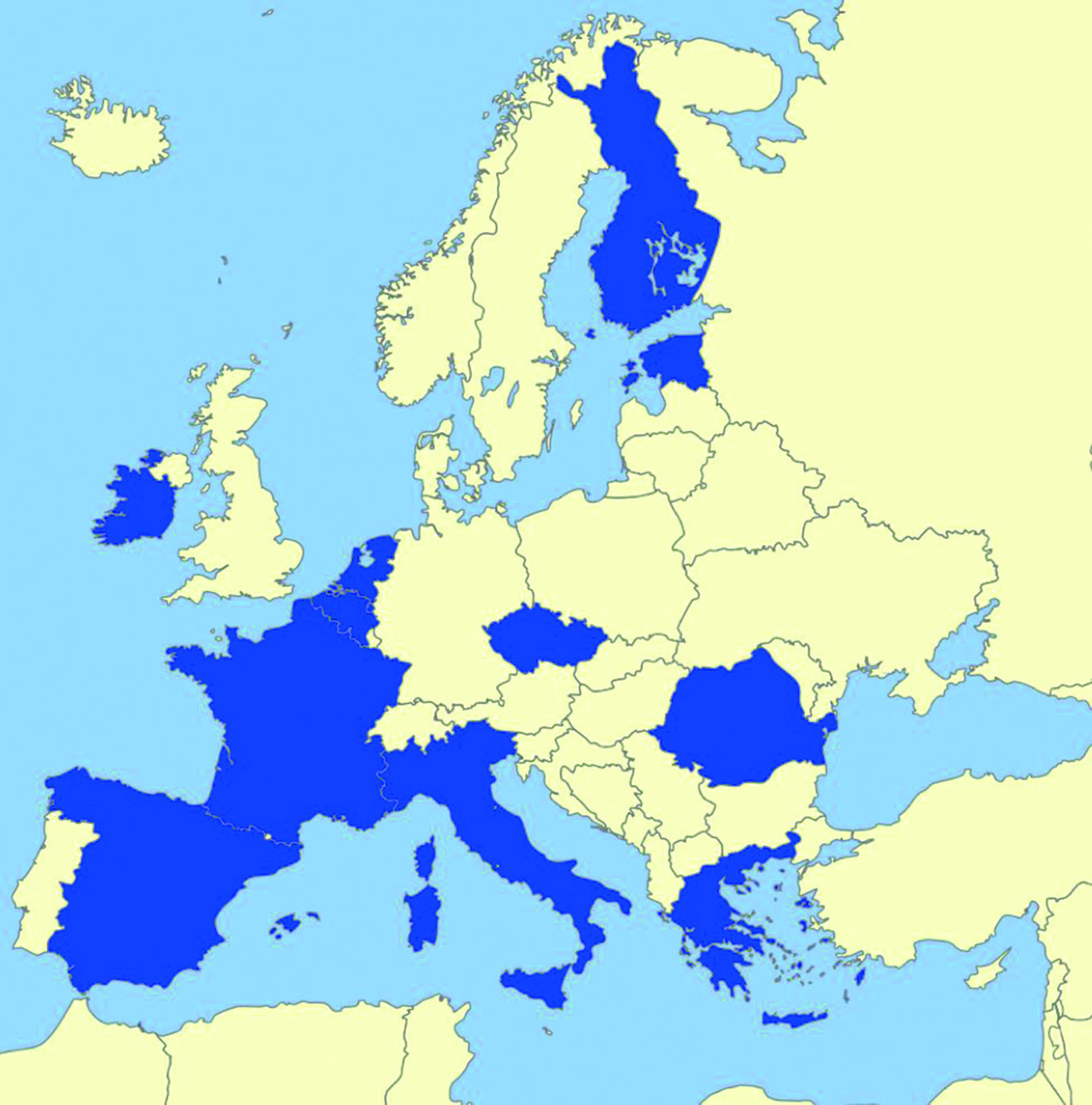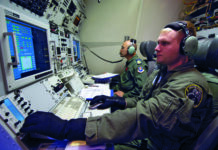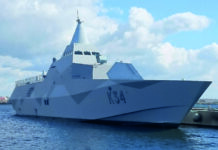The EU’s Project BROADWAY communications initiative promises to break down
barriers between the continent’s first responder emergency services.
Not many of us have moved that far from our homes or, in some cases, our offices over the past year. The COVID-19 pandemic has greatly restricted our travel. However, reminiscence has not been subject to stricture. We can fondly recall how our smartphone would magically connect to a new country’s cell phone network seconds after the cabin crew told us that we “could now switch off flight mode”. In the blink of an eye, our trusty telephone was connected to a network we had maybe never heard of. Once more, we could instantly benefit from voice and data services akin to those we enjoy at home.
The Current Situation
We can be forgiven for taking luxuries for granted. Perhaps we assume that this is the norm across all walks of life, but this is not the case for the EU’s first responders. Police, paramedics and firefighters use radios to talk to each other and with their bosses. The trouble is that these radios often do not work beyond their home nation’s borders. For example, a Swedish firefighter’s radio may not work in Spain. A French Gendarme’s radio may work badly, if at, all in Germany. At first blush, this may not seem like too much of a problem. Why would our Gendarme’s radio need to work in Germany? Is it not unlikely that they would ever be in Germany performing their duties?
The reality is that in the EU, as with many other parts of the world, cross-border cooperation is increasingly common. After all, if a disaster occurs in Poland, its effects may not stay there.
Take the example of a hypothetical freight train crash near one of Poland’s borders. Let us suppose that the train is carrying several tank cars filled with diesel. The train crashes. Millions of litres of diesel, some of which ignites, and some of which contaminates a nearby river, spill out. The air is soon thick with toxic black smoke. The river is filling up with the slick black liquid, killing fish, birds and reptiles. It is threatening to flow into a lake causing yet more damage. Local firefighters are overwhelmed by the disaster. They call for assistance from across the border. Meanwhile, neighbouring authorities need information on the extent of the crash and the damage it has wrought.
The Problem
At present, the only way the respective national law enforcement, medical and firefighting personnel can communicate with their opposite numbers is to send information up the chain of command. Once at their respective command centres the information might need to be transcribed and redrafted as an email. The email must then be sent to the relevant command centre handling the disaster in the neighbouring country. Alternatively, conventional telephone communications maybe used to share this information. All this adds complexity and bureaucracy at a moment where time and clarity is paramount. An added concern is that conventional telecommunications and internet traffic may not be as secure as it should be.
Consider another possibility: Our Gendarme is embedded with their counterparts in Spain’s Guardia Civil (Civil Guard) national police force. They are part of an exchange programme helping to coordinate Spanish and French responses to drug trafficking across their border. The Gendarme might need to be outfitted with the same radios used by their Spanish counterparts. This will ensure that they can communicate with one another when out of the office. At the same time, our French officer may have to carry their own radio so they can stay in touch with their colleagues in France. At a stroke, the number of communications devices the Gendarme must carry are doubled. The same challenges regarding international bureaucracy and communications are present as they are in our hypothetical Polish example. Surely, there has to be a better way.
Project BROADWAY
Fortunately, there is. In 2015, the European Commission initiated Project BROADMAP, and subsequently Project BROADWAY in 2018. The commission is the EU body tasked with drafting European legislation. Project BROADWAY is carrying out a pre-commercial procurement with the goal to find technical solutions for later roll-out of a pan-EU communications infrastructure (BroadNet). This is intended to be used by the EU’s first responder community. The initiative currently includes 11 procurers: the Czech Republic, Belgium, Estonia, Finland, France, Greece, Ireland, Italy, the Netherlands, Romania and Spain.
The project is evaluating several technologies that could provide interoperable mobile broadband communications to first responders in these countries and beyond. These technologies are to use fourth- and fifth-generation (4G/5G) wireless protocol architecture. EU information concerning the project says these technologies will be developed to Technology Readiness Level Eight (TRL-8). The EU’s own definitions state that TRL-8 means that development of a technology or technologies is complete and qualified. The next step is TRL-9 which covers their introduction into live use (BROADNET).
The Evolving Context
The introduction of 4G and 5G interoperable standards herald a step change for first responders. Dr. David Lund is the president of the Public Safety Communications Europe Forum. This is the coordinating body leading Project BROADWAY. He says that many of Europe’s first responders are still using second-generation and Terrestrial Trunked Radio (TETRA) based communications (2G equivalent). TETRA has significant disadvantages. Using frequencies of 380 megahertz/MHz to 430MHz, TETRA is severally restricted concerning the data it can handle. Open sources note that this is typically in the region of 691.2 kilobits/kbps per second across a 150 kilohertz channel. It fairs even worse with data rates of 40kbps the norm.
To put matters into perspective, 4G can handle data at rates of 100 megabits-per-second. This can even theoretically stretch to one gigabit per second. 5G, which is being rolled-out globally this decade, takes things further. Predictions say that this could achieve rates of up to ten gigabits-per-second.
Why is this important? For first responders information saves lives. The more information they have concerning a particular situation, the more efficiently they can handle it. Returning to our Gendarme, their superiors back in France may need to send them videos, written data and recorded conversation regarding an expected movement of narcotics across the border from Spain. Such information eats bandwidth. It would severally tax current 2G and TETRA links. 4G and 5G offer a much better way of handling such data-heavy traffic.
Thanks to the interoperability promised by Project BROADWAY, the information can be shared instantly not only with the Gendarme but with their Spanish colleagues. Another important consideration is that “the bad guys carry smartphones,” says Dr. Lund. From a communications perspective police across Europe are ‘out gunned’ by hoodlums using these devices for nefarious business. In the 1960s, several British police forces started acquiring high performance JAGUAR motorcars. This was not for reasons of vanity. Instead, it reflected the adoption of fast cars by some of the villains of the day. Quite literally, the cops had to keep up.
Services
Dr. Lund emphasises that the crucial element of Project BROADWAY is the new service layer that it will provide first responders. This will guarantee that a host of standard services are available to personnel wherever they are in the EU. It is this service layer which will ensure their communications are, for all intents and purposes, ‘network agnostic’ wherever they go in a similar fashion to a civilian’s smartphone: “We are not buying boxes of a certain kind,” says Dr. Lund: “We are buying innovation”.
His team are drafting Project BROADWAY’s objectives and standards. It is up to industry to propose and devise the technologies which meet these. Once these have been proven and reached TRL-8 they will then be rolled out at the national level by the participating nations. The beauty of Project BROADWAY is that new countries can join the programme and roll out these objectives and standards into their future 4G and 5G first responder networks. From the outset, these will possess the interoperability Project BROADWAY is harnessing. This avoids these countries having to retrofit Project BROADWAY technologies into their networks later. Such an approach risks significant extra cost and disruption.
Just a Phase
The programme is following a series of phases. Phase 1 has been completed. This constituted the design phase and defined the scope of the project, its aims and the requisite technologies. Project BROADWAY then moved into Phase-2. This is currently ongoing. Dr. Lund says that this concentrates on prototyping the technologies. Three consortia A, B and C are working on this phase.
Airbus Defence and Space leads Consortium-A. This includes BICS and Proximus of Belgium and France’s StreamWide Technology. Proximus is also involved as a subcontractor along with Poland’s PentaTech and Umlaut of Germany. Consortium-B is led by Frequentis. The company has partnered with Nemergent Solutions, and the University and Municipality of Malaga, all of which are based in Spain. This is alongside Halys, Etelm and Crosscall of France.
Subcontractors include Austria’s Arico Technologies, the Franco-Swiss Eutelsat, Germany’s Virtual Fort Knox and finally PrioCom and T-Mobile of the Netherlands. Leonardo heads Consortium-C. It is joined by Vodafone Portugal along with Ubiwhere and Proef; also Portuguese firms. Three Italian companies; RadioLabs, the University of Bologna and Athonet form part of Consortium-C. Finally, Finland’s Bittium and Telespazio France are included. Both the UK’s University of Lancaster and Italy’s Iscom participate as subcontractors.
Dr. Lund says that Phase-2 is coming to a close: “We will evaluate the prototype phase towards the end of May.” This will involve the number of participating teams being down selected to two. Once this selection has been made “we will invite the successful teams to compete for the pilot stage.” The pilot stage represents the final step for the initiative. This will see the innovations pioneered for Project BROADWAY being brought to TRL-8. Once this is done, Dr. Lund expects a limited deployment of the technology to occur.
Advantages
From a hardware perspective, Dr. Lund foresees that the individual first responder will end up with some sort of smartphone device; most probably ruggedised and outfitted with a headset. In the emergency services domain, the walkie-talkie radios of yore are giving way to smartphones. This is simply because a smartphone can do so much more. First responders are not just using so-called ‘Push To Talk’ (PTT) services anymore, says Dr. Lund. They need data and video services too. Such attributes can be easily provided with smartphone technology.
Nonetheless, Dr. Lund expects traditional PTT radios to continue being used alongside Project BROADWAY’s new technologies for some years to come: “Both walkie-talkies and the new smartphones will probably continue for a while, but the former will eventually be replaced,” he predicts: “First responders know and trust PTT technology”.
Winning their trust in the new Project BROADWAY technology is imperative for ensuring a smooth transition. Getting the technology into the hands of emergency services personnel is an important step. Those using it will almost certainly help to devise new ways of employing the technology not necessarily envisaged by the developers. This could feed future innovations which could be rolled out across the Project BROADWAY infrastructure as it goes through its life.
Another benefit of Project BROADWAY is that it will not require new communications networks to be built in the countries where first responders will use the technology. Such an approach would be highly impractical as it would require the network infrastructure to be built from scratch. Some countries will have some dedicated capability but many will share commercial mobile radio access. Dr. Lund says that the Project BROADWAY service layer will be hosted by pre-existing 4G and forthcoming 5G national cellular and radio access networks. Participating nations will implement their system nationally and the Project BROADWAY seeks to leverage mobile standards to allow for interconnection between countries.
The advent of Project BROADWAY will herald a quiet revolution in how the continent’s first responders communicate with one another. The work of emergency services does not always stop at national borders. Having capable communications working seamlessly with third party emergency services networks will be an important step towards facilitating this: “The challenge is operational mobility for first responders,” Dr. Lund emphasises: “This is about ensuring that they can operate wherever they are as they would when they are at home.”











